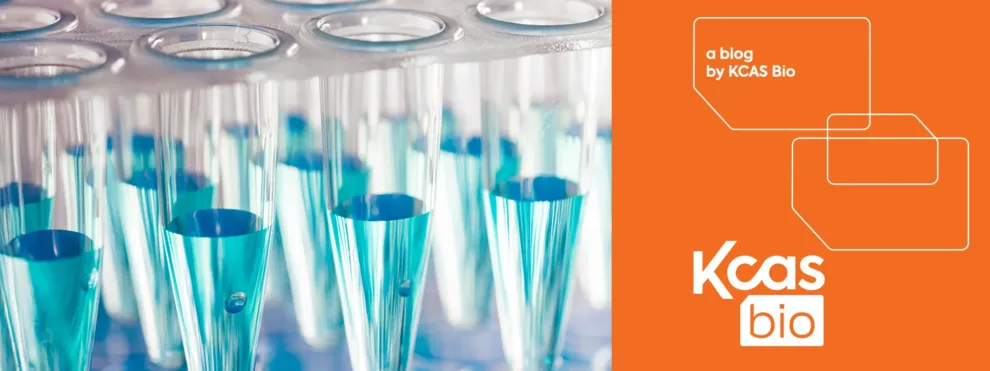PCR-based assays are increasingly utilized for bioanalysis to support the development of a wide variety of therapeutics. While the largest driver for this growth has been the expanding pipeline of cell, gene, and RNA therapies, PCR-based assays are also seeing increased use in biomarker detection across all therapeutic modalities. These assays are typically used for PK/PD assessments of gene, cell, and RNA therapies, but are also employed to measure DNA and RNA biomarkers associated with treatment response.
The expanding availability of predesigned assays for gene expression, genetic variant biomarkers, and sequences commonly used in cell and gene therapy drug products has significantly contributed to PCR growth in bioanalysis.
Platform Selection: qPCR vs dPCR
When developing a PCR-based method, selecting the appropriate platform is one of the first critical decisions. Real-time quantitative PCR (qPCR) and digital PCR (dPCR) offer differing but overlapping capabilities for bioanalysis applications.
Quantitative PCR (qPCR): The Traditional Workhorse
Advantages of qPCR
Quantitative PCR is considered the traditional workhorse for the quantification of nucleic acid targets, offering impressive dynamic ranges with 6 to 8 orders of magnitude for quantification. While generally considered less sensitive than dPCR methods, sensitivity issues in qPCR assays relative to ddPCR can often be overcome by optimizing reaction volumes and master mix formulations to allow for larger input template volumes.
With master mixes and reagents interchangeable across qPCR instruments, qPCR assays provide significant economic advantages. Many qPCR platforms can perform 384-reaction well formats in less than an hour, further driving down bioanalysis costs and delivering faster sample-to-results turnaround times.
Disadvantages of qPCR
A key disadvantage of qPCR assays is the potential effect of reaction efficiency on results. PCR reaction efficiency must be carefully assessed for accurate results in qPCR applications. Even for well-developed, validated qPCR assays, the presence of inhibitors within a sample can influence apparent copy numbers per reaction. As little as a 5% difference in reaction efficiency can result in greater than 2-fold difference in results after 30 cycles of PCR.
Digital PCR (dPCR): Enhanced Precision and Sensitivity
Key Advantages of dPCR
Digital PCR, including droplet dPCR (ddPCR), is considered to have significant advantages over qPCR with respect to enhanced sensitivity. Additionally, the ability for absolute quantification of targets without standard curves is considered a key improvement of dPCR compared to qPCR. The accuracy and precision of dPCR allows for the detection of differences in target sequences as low as 10% between samples.
Due to the partitioning of PCR reactions into thousands of individual nano-reactions, dPCR is less susceptible than qPCR to the influence of PCR inhibitors that may be present in complex biological matrices.
Disadvantages of dPCR
Major disadvantages of dPCR platforms include higher costs, smaller dynamic range of quantification (about 4 orders of magnitude), and lower throughput, with current platforms limited to 16 to 96 reaction formats. In general, dPCR platforms have limited master mix options that are proprietary for each instrument due to precise requirements for reaction partitioning.
Proprietary master mixes, along with differences in sample partitioning strategies (microfluidics versus water-in-oil droplets) and signal detection (endpoint versus real-time) between platforms, can present challenges for method transfer if not utilizing the same workflow.
Making the Right Choice: qPCR or dPCR?
The selection of the appropriate PCR platform for bioanalysis should carefully consider the context of use with respect to sample preparation and specific assay requirements. Factors to evaluate include throughput and timeline requirements, budget constraints and cost considerations, as well as the sensitivity and precision needs of your particular application.
Both Platforms Deliver Results
Both qPCR and dPCR are capable of sensitive quantification of DNA and RNA targets with excellent accuracy and precision when utilizing well-developed and validated assays. Rapid improvements and adoption of dPCR technology continue to narrow the gap between the relative advantages and disadvantages compared to qPCR.
Ready to optimize your bioanalysis approach? At KCAS Bio, we offer both qPCR and ddPCR capabilities in our state-of-the-art laboratories with unidirectional workflow design. Our team of experts can help you select the best platform to meet your specific bioanalysis requirements.

